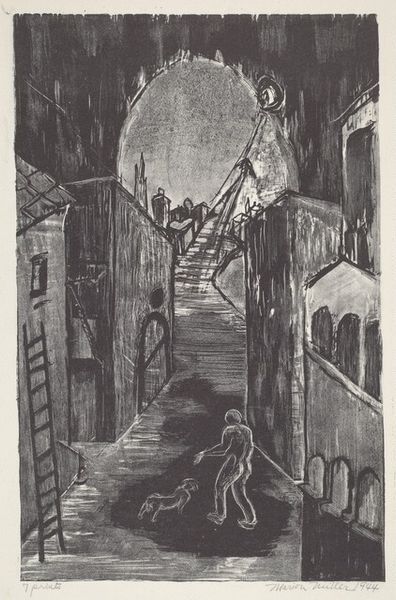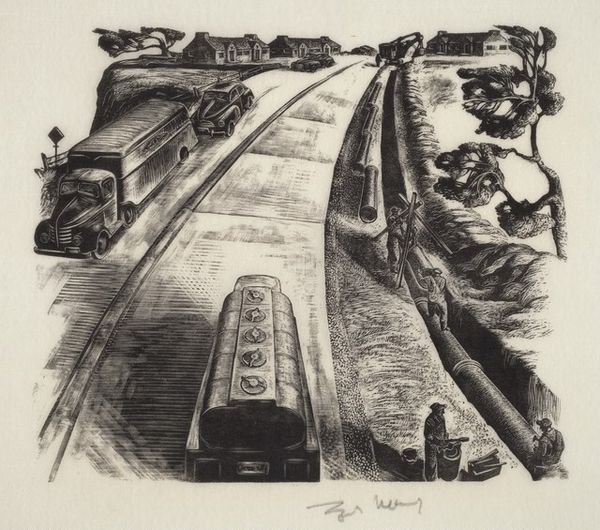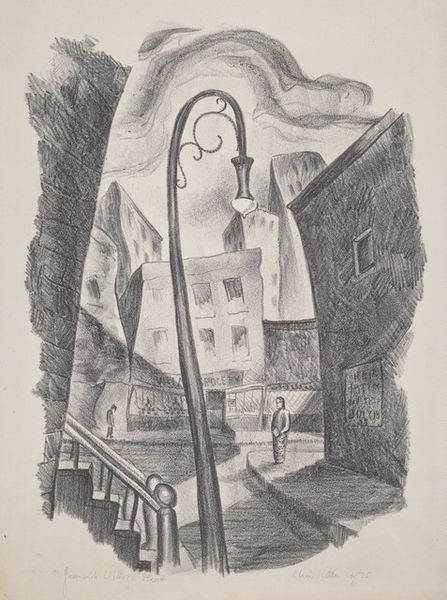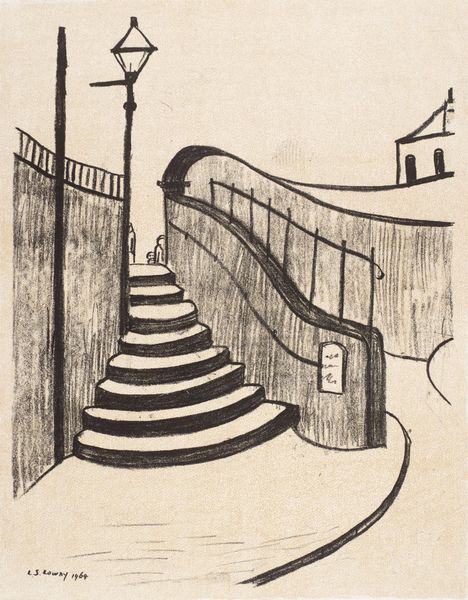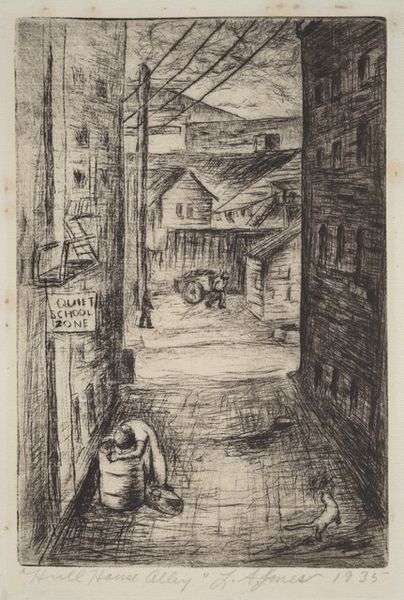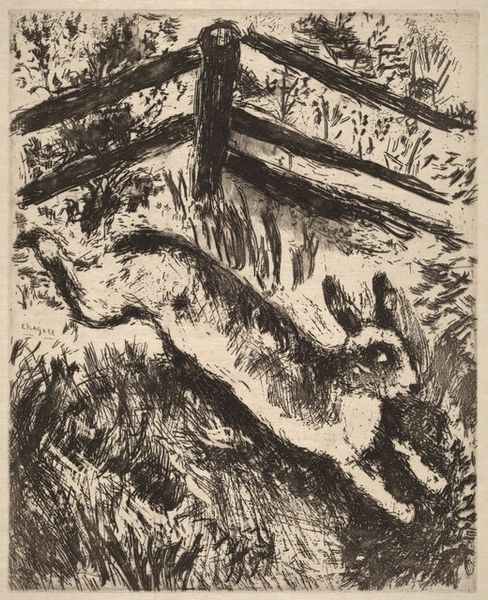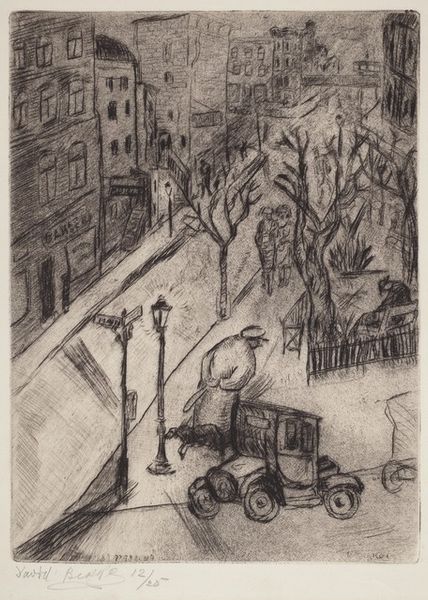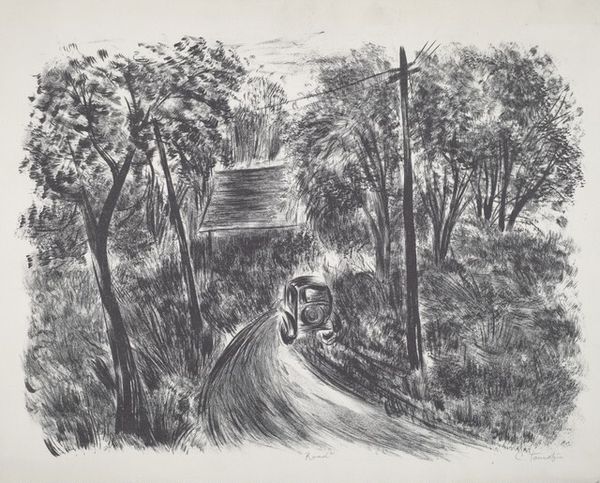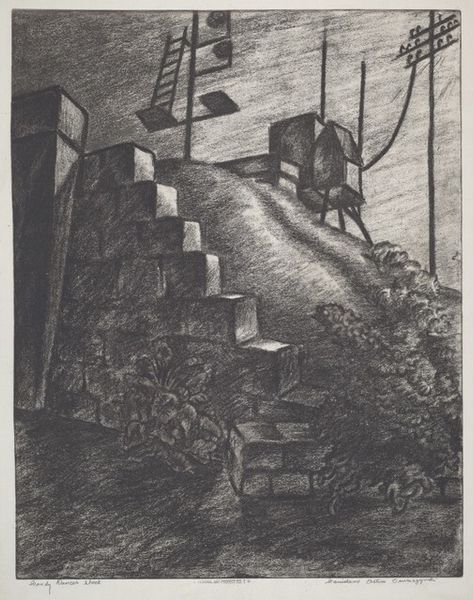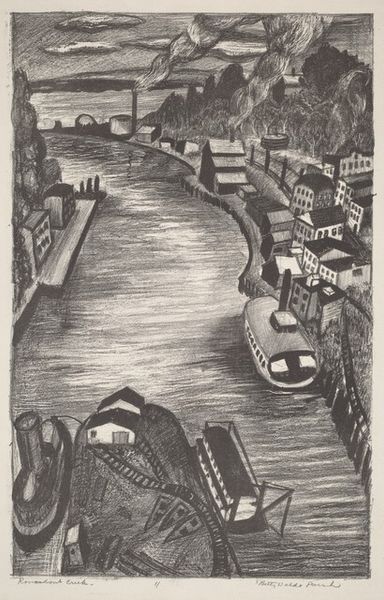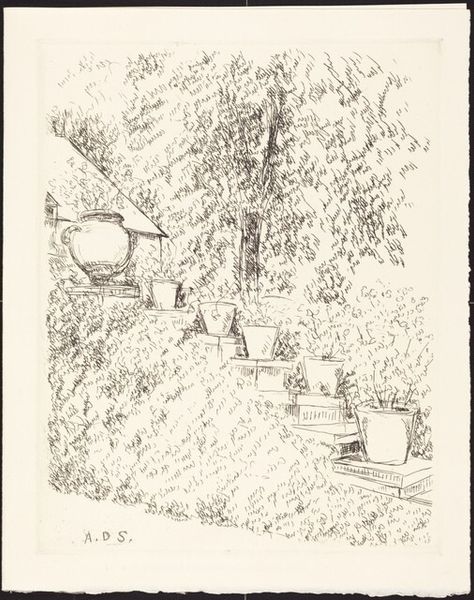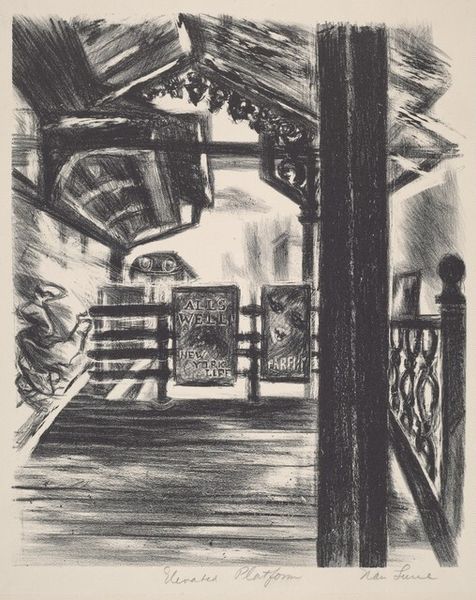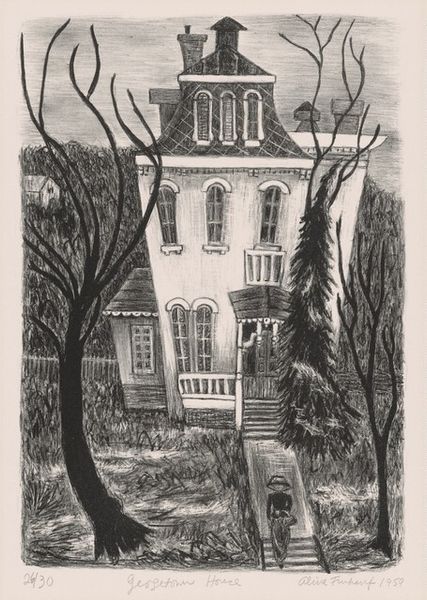
drawing, print, pencil, graphite
#
pencil drawn
#
drawing
# print
#
pencil sketch
#
landscape
#
charcoal drawing
#
pencil drawing
#
geometric
#
pencil
#
graphite
Dimensions: image: 210 x 146 mm sheet: 318 x 219 mm
Copyright: National Gallery of Art: CC0 1.0
Editor: This is Aline Fruhauf's "Untitled (Landscape with Trestle Bridge)," a graphite on paper print from around 1932. I’m immediately drawn to how the converging lines create a kind of disorienting perspective. What do you see in this piece? Curator: The handling of line is indeed critical. Notice how the stark, almost brutal linearity of the bridge and road contrasts with the softer, more organic rendering of the foliage and trees. Fruhauf creates a tension, a visual dissonance, through this juxtaposition. Consider also how the geometric precision directs the gaze. Editor: It definitely leads the eye. Is the contrast in the rendering also something you find important? Curator: Absolutely. The materiality is also a sign. The choice of graphite, the smudging, the varied pressure – these are not simply descriptive choices but deliberate formal strategies. They reveal Fruhauf's active engagement with the medium itself, rather than a simple attempt at representational accuracy. The contrasts force the eye into constant activity, a kind of haptic looking that makes the viewer actively engage with the pictorial space. How do you see that working? Editor: I guess it keeps you from just passively observing; you're always comparing the textures and the precision. So, by manipulating the materials in contrasting ways, the artist constructs this experience for the viewer. Curator: Precisely. Fruhauf isn’t just showing us a landscape; she’s inviting us to actively *see* it, to consider the fundamental elements that constitute its visual structure. The emotional response, then, stems from this visual engagement itself. Editor: That's fascinating; I had not considered the materials and composition working in that way. I was more focused on what was being depicted. Thank you. Curator: A necessary shift in perspective to deepen our appreciation, I hope!
Comments
No comments
Be the first to comment and join the conversation on the ultimate creative platform.
